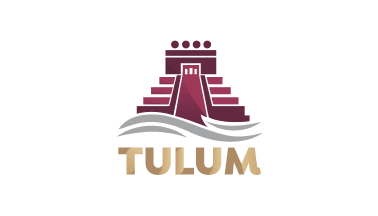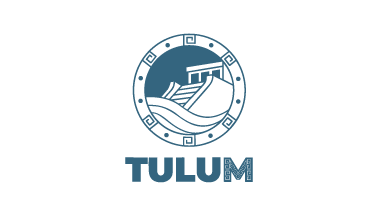
by Daniel Rentería, 23 June 2025
1 from Facebook
Emblem from: tulum.gob.mx

Last modified: 2025-06-27 by daniel rentería
Keywords: tulum | quintana roo | bandera municipal y escudo municipal (quintana roo) | escudo del municipio (quintana roo) | bandera del municipio (quintana roo) | héraldica municipal de quintana roo |
Links: FOTW homepage |
search |
disclaimer and copyright |
write us |
mirrors

by Daniel Rentería, 23 June 2025
1 from
Facebook
Emblem from: tulum.gob.mx
See also:
The flag of Tulum is white with its coat of arms centered upon it. It is believed that the flag was adopted at the start of the term of Municipal President Diego Castañón Trejo in March or April 2023.
Daniel Rentería, 23 June 2025

image created using logo at tulum.gob.mx
1 from Facebook

image created using logo at eco-bahia.com
1 from Facebook
Although the Council of 2021-2023 also used this logo, only Diego Castañón Trejo (2023-2024) as Interim Municipal President adopted this flag.
Daniel Rentería, 23 June 2025
.gif)
from tulum.gob.mx
The coat of arms of Tulum was designed by the teacher Julio César Peraza, being approved by the Municipal Council on 18 August 2008 and published in the Official State Newspaper on 6 November 2008. It was adopted through a contest for the adoption of a municipal coat of arms, receiving 44 entries. The shield has a sun above it, having in its yellow Maya numerology from one to nine, signifying that Tulum is the ninth municipality in the state. At the bottom of the shield are two Maya tongues in yellow also representing the sun; these signify the Maya tongue (language) as significant in the area. The border of the shield is white, which can represent its white sands.
The inner area of the shield is green like the green of the jungle, having at the top the sky fading and in the middle a lagoon. Crossing over the lagoon is a sacbe (white trail); which were raised roads built by the Mayas. The lagoon also depicts two canoes by a dock, important for transport in Maya times, fishing, and tourism today. The right side depicts a cenote, as Tulum is known for having the greatest number of them. At the bottom is a depiction of the Descending God, important in Maya culture; he is depicted as being upside down. The upper area depicts a turtle for its marine fauna, symbol of tourism, on the left; on the right is a coconut tree and thatch palm tree for its flora, common in the area. Also seen is a jaguar for its fauna, respected by the Mayas but today in danger of extinction. In the center of this upper area is the "El Castillo" Maya pyramid, probably the most representative of Tulum.
Daniel Rentería, 23 June 2025
Anything below this line was not added by the editor of this page.